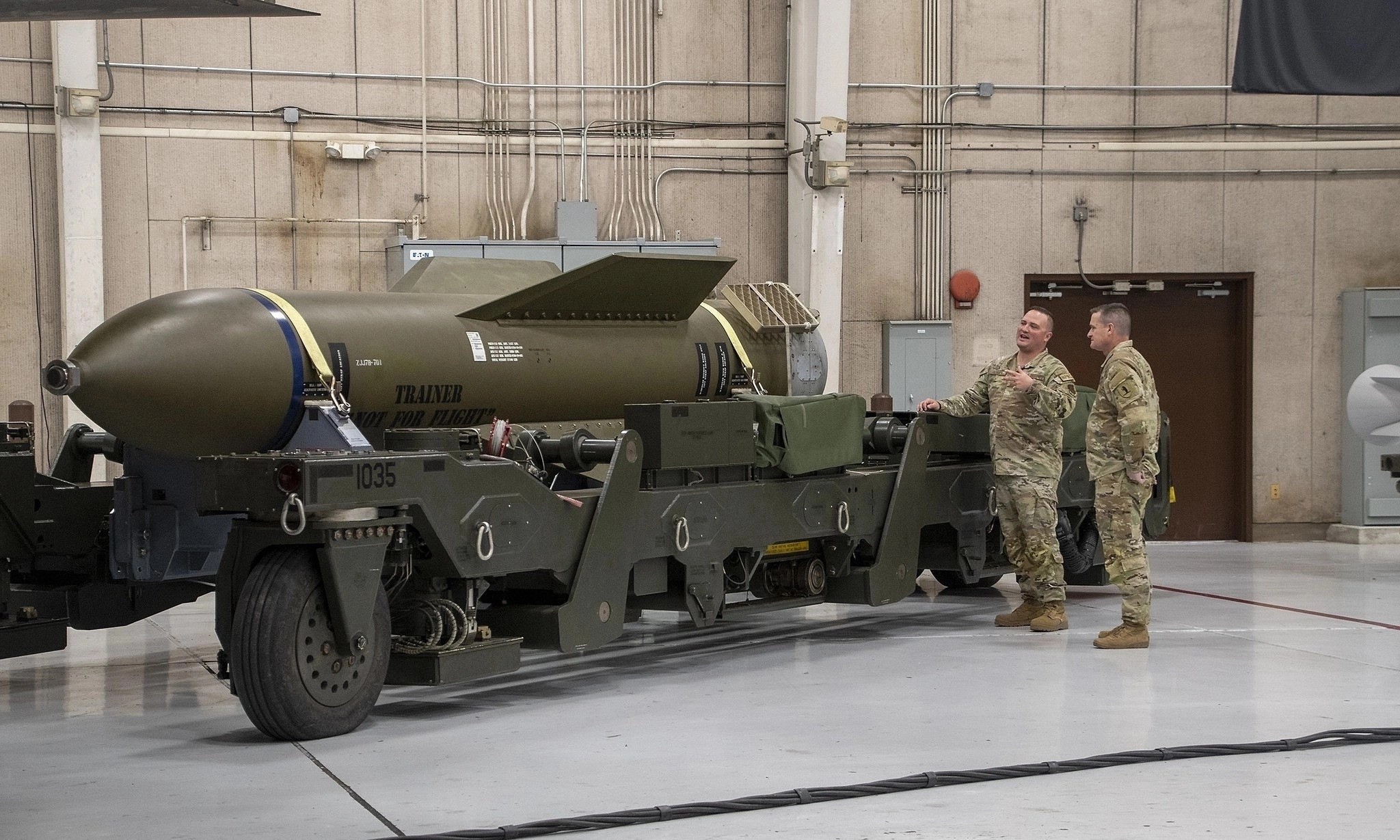The Air Force Life Cycle Management Center (AFLCMC) issued a request for proposals on July 7th for a project related to the GBU-57 MOP, mentioning "integration and software modifications to the KMU-612 tailkit guidance unit and the BLU-127 bomb body fuze".
The KMU-612/B is the tail section of the GBU-57, containing an inertial navigation system combined with GPS. The BLU-127 is the penetrating warhead, which, combined with the KMU-612/B and other components, forms the complete GBU-57.
The AFLCMC did not specify the exact upgrades. One limitation of the GBU-57 is its lack of an airburst fuze, meaning it detonates only after coming to a complete stop. This could cause the bomb to pass through the target and detonate deep underground, rather than within the intended target area for maximum effect.
Germany uses similar technology in its Taurus cruise missile, where the Programmable Intelligent Multi-Purpose Fuze (PIMPF) can determine the number of material layers and air gaps in a target, calculating the optimal detonation point.
"A fuze that can accurately count the number of material layers to determine the depth for maximum damage would be a useful feature," wrote Joseph Trevithick of War Zone.
During a June 26th press conference, US Chairman of the Joint Chiefs of Staff Gen. Dan Caine stated that the fuzes on the 12 GBU-57s used in a strike on Iran's Fordow nuclear facility were individually programmed for different effects within the target.
At 6 m long, 0.8 m in diameter, and weighing nearly 14 tons, the GBU-57 MOP is the second-largest and heaviest non-nuclear bomb in the US arsenal.
The US Air Force claims the GBU-57 can penetrate up to 60 m of material before detonating, but the specific material isn't specified. Analysts at IHS Janes estimate it can penetrate 60 m of earth or 18 m of concrete.
 |
Training model of the GBU-57 at Whiteman Air Force Base in 2023. Photo: USAF |
The early morning strike on Iranian nuclear facilities on 22/6 marked the first reported use of the GBU-57 in combat. The Pentagon declared the operation a "resounding success", but the actual results remain disputed.
The US military recently assessed that the attack set back Iran's nuclear program by 1-2 years. However, the International Atomic Energy Agency (IAEA) suggests Iran could resume uranium enrichment within months, or even sooner.
"Any improvements to the GBU-57's fuzing system, as well as other aspects of the bomb, are likely to benefit from lessons learned from the strike on Iran's nuclear facilities," Trevithick said.
While the US Air Force hasn't disclosed the number of GBU-57s in its inventory, it appears to have possessed at least 20 before the Iran strike. Air Force Chief of Staff Gen. David Allvin stated on June 26th that the Air Force is expanding its GBU-57 stockpile.
Pham Giang (According to War Zone)












